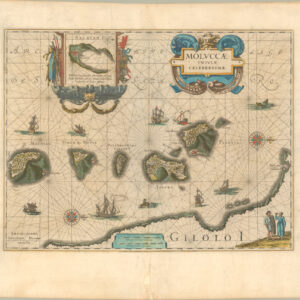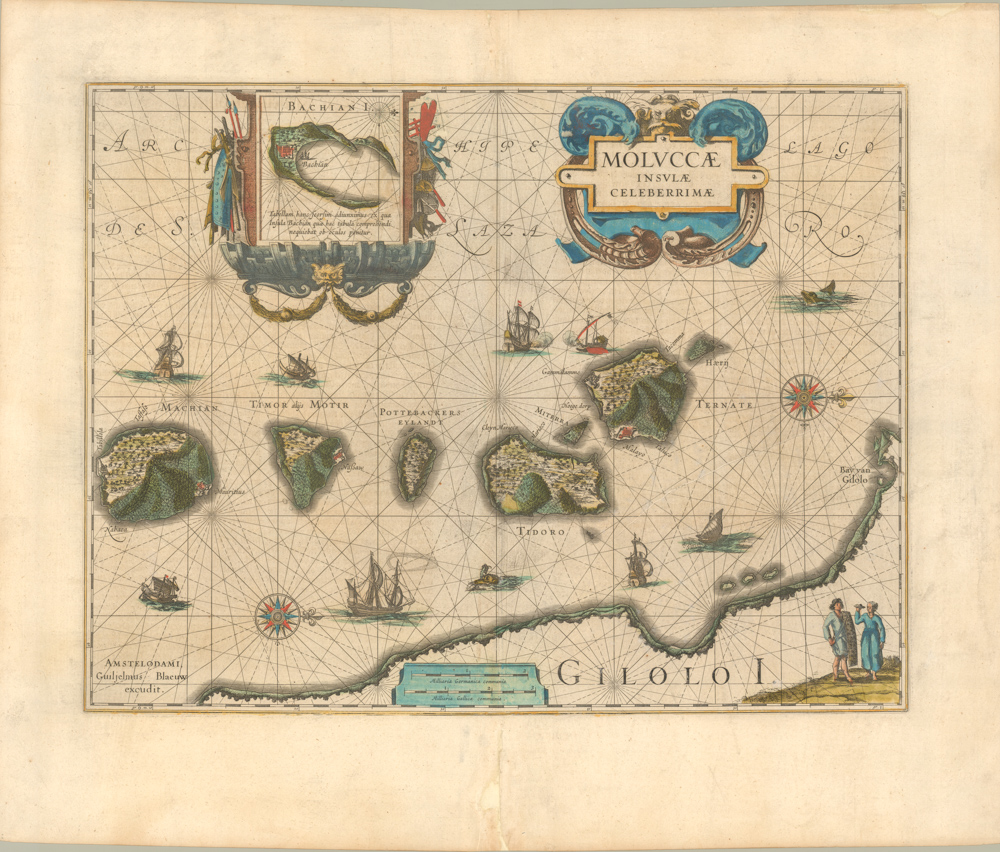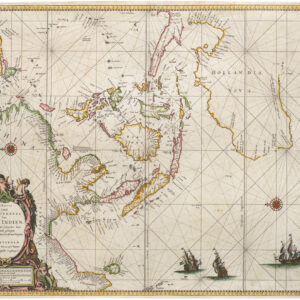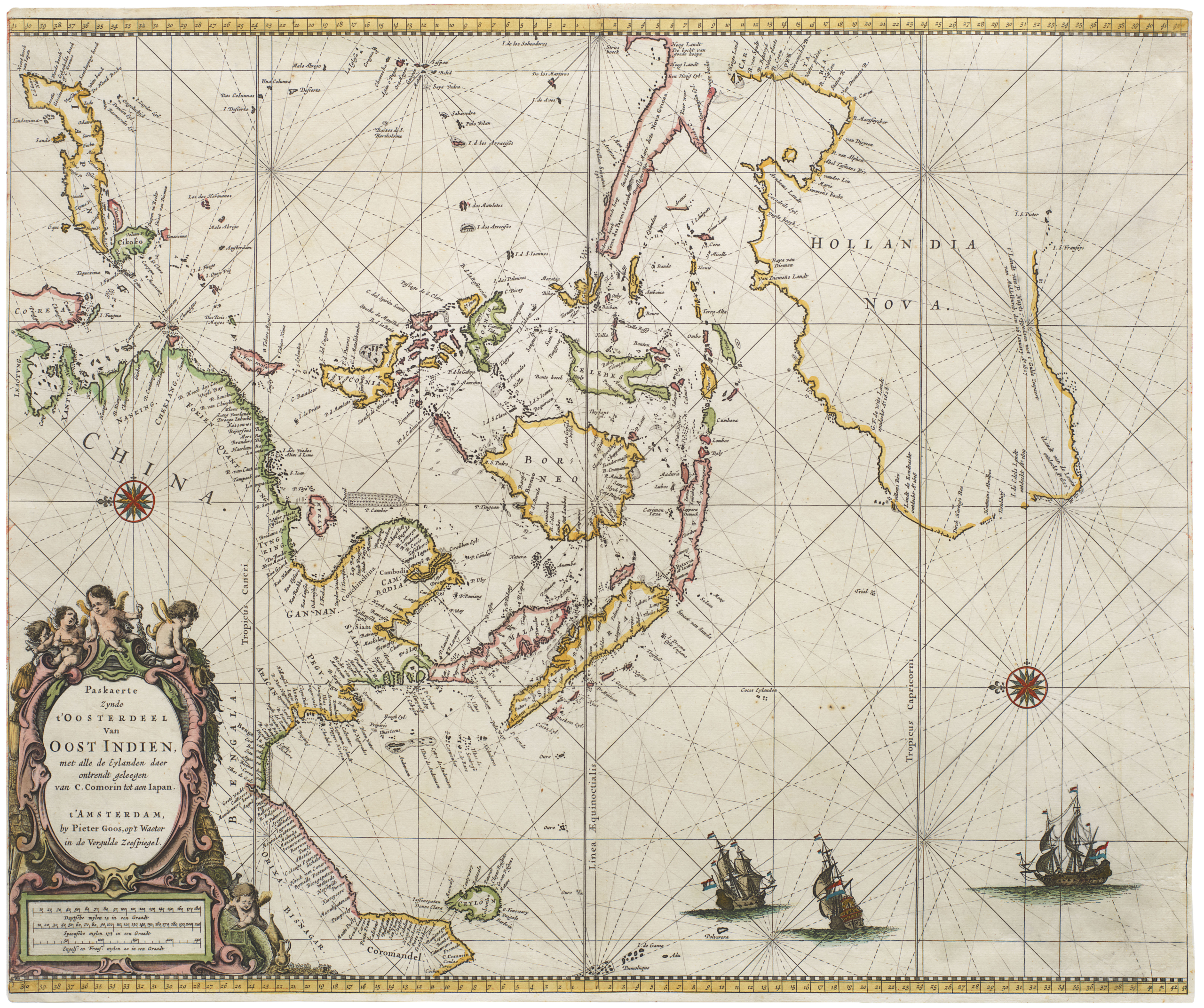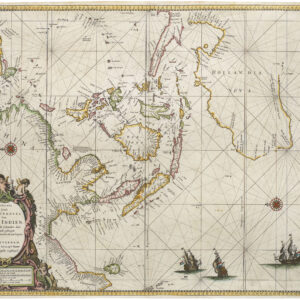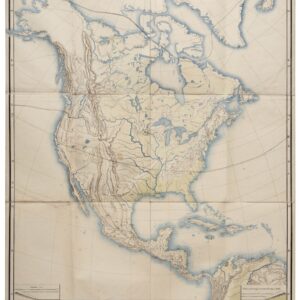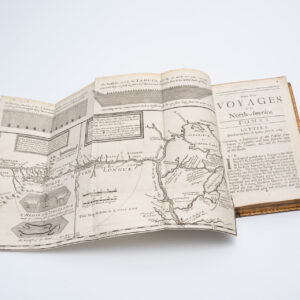The uncommon second plate of Ortelius’s famous map of the Western Hemisphere in original colors.
Americae Sive Novi Orbis, Nova Descriptio
Out of stock
Description
A derivative of Mercator’s large map published the year before, this is the second plate of Ortelius’s map of the Americas, with the ship in the Pacific sailing eastward.
This plate had a short life of only 8 years. It was replaced in 1587 or slightly later by a third plate, which no longer shows the bulge in South America’s west coast.
‘Americae sive Novi Orbis’ provides a reasonably accurate outline of North America and improves on the representation of the St. Lawrence River that Ortelius made on his world map. However, the map shows a very narrow Pacific Ocean and situates New Guinea due south of California. Ortelius also locates Quivira too far to the west seeming to have relied on Francisco López de Gómara’s popular Historia general de las Indias (1552).
The map depicts Anian, a mythical kingdom that Marco Polo mentioned in his travel accounts. Before it appeared in America on this map, Anian was generally believed to be located off the coast of north Asia. Curiously, Ortelius’s great world map published just six years earlier located Anian on the Asian mainland.
Ortelius was one of the first cartographers outside of Spain to adopt the place-names designated by the Spanish explorers de Niza, Coronado, and Cabrillo. The map therefore provides more detail compared to other contemporary maps.
Latin text on verso. Watermark: two crossed arrows.
Cartographer(s):
Abraham Ortelius (1527-1598) was born in Antwerp to Flemish parents in 1527. After studying Greek, Latin, and mathematics, he and his sister set up shop as book dealers and a ‘painter of maps.’ In his heart, Ortelius was, nevertheless, first and foremost a historian. He believed geography was the ‘eye of history,’ which explains why he collected maps and historical documents with such passion. Ortelius traveled widely in pursuit of his interests, building contacts with mapmakers and literati all over the European continent.
Ortelius reached a turning point in his career in 1564 with the publication of a World Map in eight sheets, of which only a single copy survives. In 1570, he published a comprehensive collection of maps titled Theatrum orbis terrarum (Theatre of the World). The Theatrum is conventionally considered the first modern-style atlas. It was compiled by collecting maps and charts from colleagues across the continent, which Ortelius then had engraved in a uniform size and style. The engraver for most of the maps in Theatrum was none other than the famous Frans Hogenberg, who also served as the main engraver for the 16th-century urban atlas Civitates Orbis Terrarum, published with Georg Braun in 1572.
Hogenberg’s re-drawn and standardized maps formed the basis of the first atlas in history (even though it was Mercator who was the first to use the term a few decades later). Unlike many of his contemporaries, Ortelius noted his sources openly and in the first edition, acknowledged no less than eighty-seven different European cartographers. This ‘catalogus auctorum tabularum geographicum‘ is one of the major innovations of his atlas. The list of contributing mapmakers was kept up-to-date for decades after Ortelius’ death. In the first edition of 1570, this list included 87 names, whereas the posthumous edition of 1603 contained no less than 183 names.
While compiled by Abraham Ortelius in the manner described above, the Theatrum was first printed by Gielis Coppens van Diest, an Antwerp printer experienced with cosmographical books. Van Diest was succeeded by his son Anthonis in 1573, who in turn was followed by Gillis van den Rade, who printed the 1575 edition of Ortelius’ atlas. From 1579, Christoffel Plantin took over, and his successors continued to print Theatrum until Ortelius’ heirs sold the copperplates and the publication rights to Jan Baptist Vrients in 1601. In 1612, shortly after Vrients’s death, the copperplates passed to the Moretus brothers.
Condition Description
A double-page engraved map with two minor paper repairs in the margin and a small lower centerfold repair. Paper slightly age toned. Overall in good condition.
References
Van den Broecke 1579L(B)5 - 250 copies printed.
